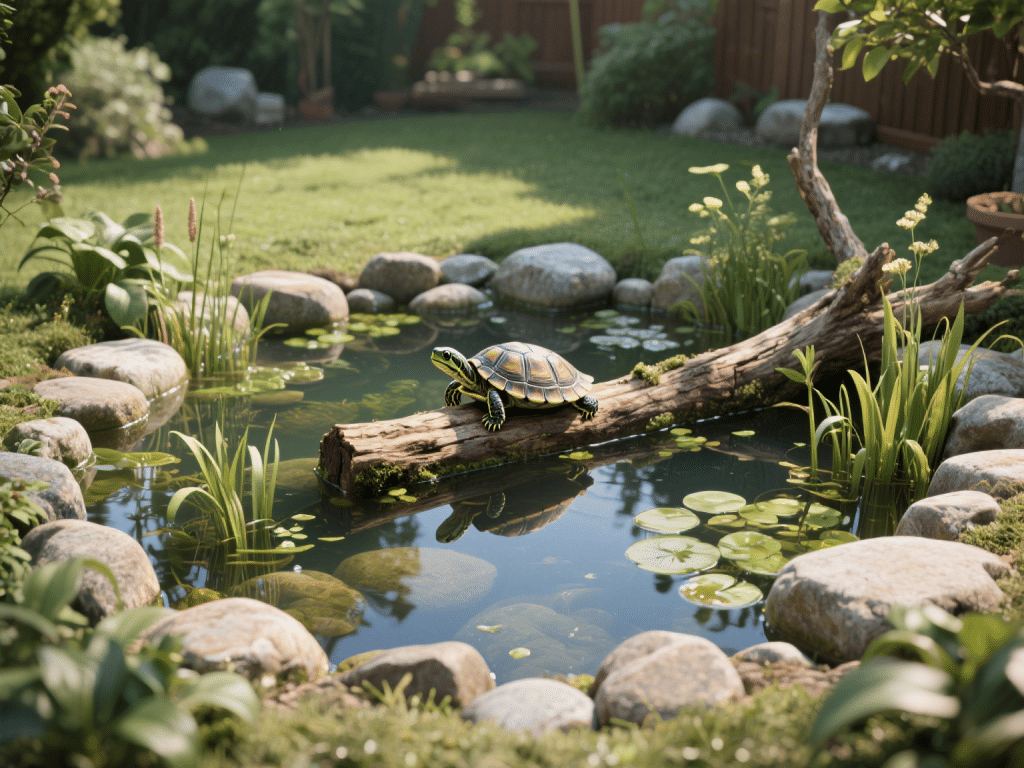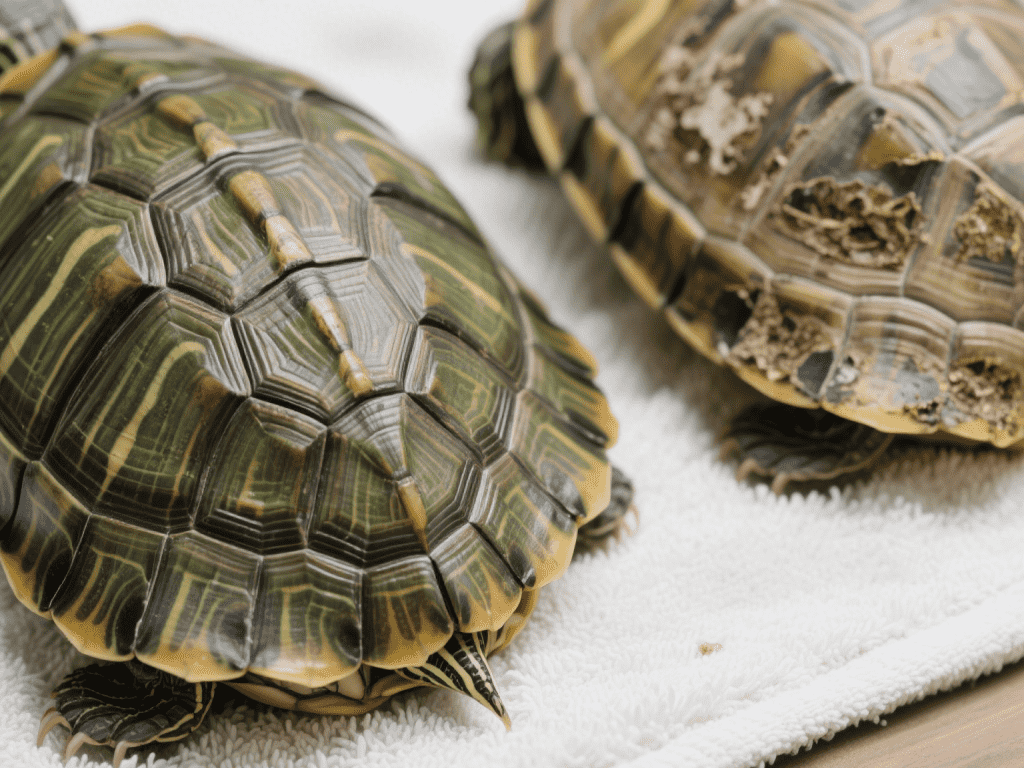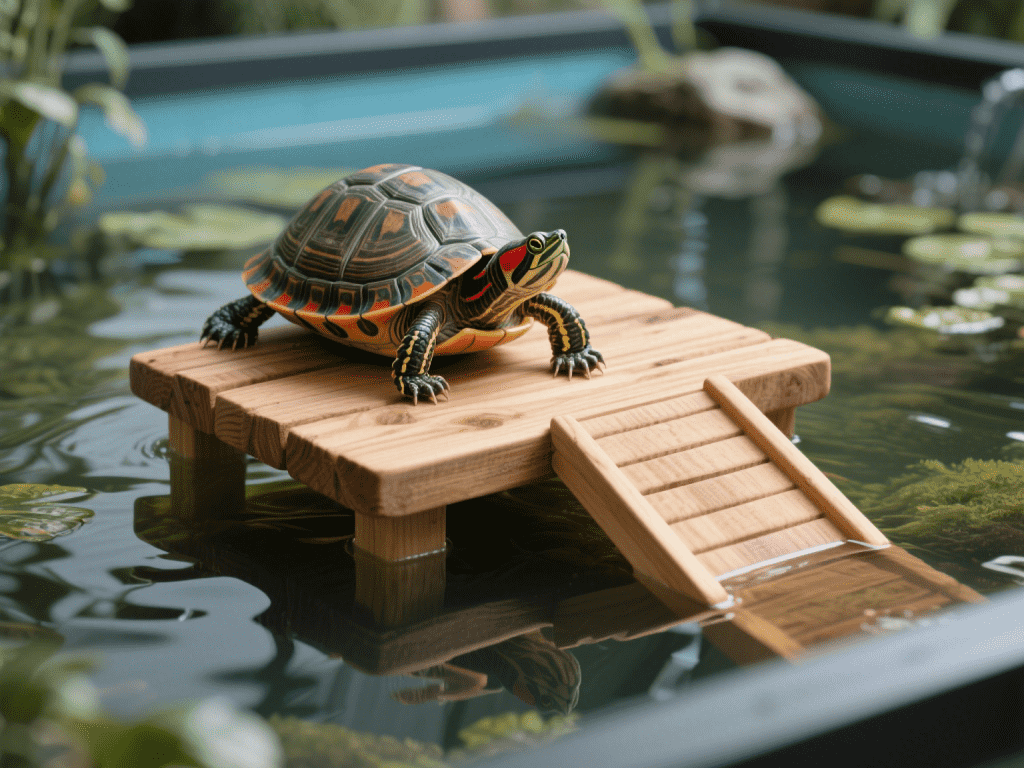
Creating an outdoor turtle pond that’s both beautiful and biologically sound requires careful planning, the right equipment, and ongoing maintenance. Over twenty years consulting for wildlife sanctuaries and private keepers, I’ve distilled the key steps to ensure your pond provides optimal water quality, natural behavior enrichment, and year‑round health for your turtles.
1. Site Selection & Pond Layout
Sun Exposure & Temperature:
Choose a spot that receives at least 6 hours of direct sunlight daily. This helps maintain water temperatures between 75–85 °F (24–29 °C) and supports aquatic plant growth.
Avoid areas prone to heavy leaf fall or runoff from garden beds that could introduce chemicals.
Size & Depth Zones:
Minimum Volume: Aim for at least 100–200 gallons per adult turtle. A 4×6 ft, 18 in deep pond can house two to three medium sliders comfortably.
Shallow Bay (4–6 inches): Ideal for hatchlings, aquatic insects, and easy exit points.
Deep Zone (12–18 inches): Provides cool refuge and space for full swimming activity.
Basking Platform: Incorporate a gentle slope or floating log so turtles can climb out and dry off at will. Position basking areas where UVB lamps or natural sun reach them directly.
2. Filtration & Water Quality Management
Mechanical Filtration:
Pre‑filter Skimmer Basket: Captures leaves and large debris, prolonging pump life.
Multi‑stage Filter Media: Combine sponge (mechanical), activated carbon (chemical), and ceramic rings (biological) in a canister or pond filter.
Biological Filtration:
Media for Nitrifying Bacteria: High-surface-area ceramic bio‑rings or bio‑balls provide a home for bacteria that convert ammonia → nitrite → nitrate.
Plant‑assisted Filtration: Floating plants like water hyacinth and pennywort absorb excess nutrients, inhibit algae, and oxygenate the water.
UV Sterilization & Aeration:
UV Clarifier: A unit rated for your flow rate (e.g., 150–200 GPH) passes water past UV bulbs to control green‑water algae and pathogens.
Air Pump & Diffuser: Maintain dissolved oxygen above 5 mg/L to support turtles and beneficial microbes.
3. Establishing Ecological Balance
Beneficial Invertebrates:
Introduce pond snails (e.g., ramshorn), daphnia, or freshwater shrimp to help consume detritus and algae.
Compatible Fish Species:
Small koi or goldfish can coexist, eating leftover food and algae. Monitor their feed and waste to avoid nutrient spikes.
Water Testing & Adjustment:
Monthly check pH (6.8–7.4), ammonia (<0.25 ppm), nitrite (<0.1 ppm), nitrate (<20 ppm) using a reliable test kit.
Adjust with partial water changes (10–20%) or botanical buffers (e.g., Indian almond leaves) to stabilize pH.
4. Routine Maintenance
Sediment Removal:
Every 2–4 weeks, use a pond vacuum or siphon to clear settled waste without draining the pond completely—preserving beneficial bacteria.
Partial Water Changes:
Replace 10–20% of the volume biweekly with dechlorinated water that matches temperature.
Filter Upkeep:
Rinse mechanical sponges in pond water every 1–2 weeks; replace carbon cartridges every 3–6 months.
5. Seasonal Care
Spring Startup:
Inspect pumps, clean lines, and restart UV bulbs.
Gradually reintroduce turtles once daytime temperatures exceed 60 °F (15 °C).
Summer Management:
Provide shade sails or floating plant coverage to prevent water temperatures from exceeding 90 °F (32 °C).
Increase aeration and run filters continuously to handle higher metabolic and algal loads.
Autumn Transition:
Begin reducing feedings as temperatures fall below 70 °F (21 °C).
Continue water changes and filter cleaning until the first frosts.
Winter Strategy (if brumating onsite):
Option A: In-Pond Brumation—deactivate pumps but keep a small unfrozen hole using a floating de‑icer; ensure turtles can access shallows.
Option B: Indoor Brumation—move turtles to a temperature‐controlled brumation chamber set at 50–60 °F (10–15 °C).
By following these design and maintenance guidelines, your outdoor turtle pond will flourish as a balanced ecosystem—supporting turtles’ natural behaviors, promoting excellent health, and blending seamlessly with your landscape. Consistent monitoring, thoughtful filtration choices, and seasonal adjustments ensure a safe haven for your shelled companions year after year.









Comments on " Designing the Ideal Outdoor Turtle Pond: Layout, Filtration & Seasonal Care" :